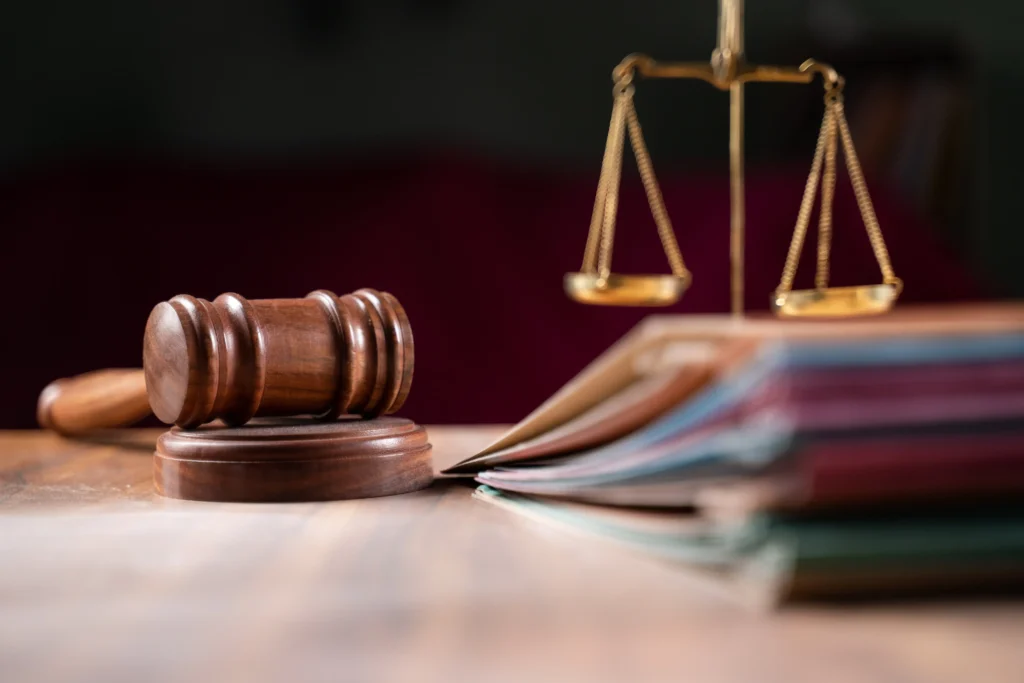Coming forward about abuse that happened in a juvenile detention facility can feel overwhelming. The memories are often painful, and the idea of reliving them in a legal setting can be intimidating. Still, many people in San Bernardino are now finding the strength to speak out.
In recent years, lawsuits have revealed troubling accounts of misconduct inside local juvenile centers, with some cases involving very young detainees. Changes in California law have opened the door for more survivors to take legal action, even if the abuse happened long ago.
If this happened to you or someone close to you, there is help available. Reach out to Litigation Connect to speak with an attorney who will listen, explain your options, and guide you through the process of seeking justice.
Contact Our Team Today
Overview of the Facilities and the Allegations
San Bernardino County operates two juvenile detention facilities: the Central Valley Juvenile Detention and Assessment Center in Apple Valley and the San Bernardino Juvenile Detention and Assessment Center. These centers are meant to provide secure housing, rehabilitation programs, and structured supervision for young people awaiting court or serving short sentences. Recent lawsuits and survivor accounts, however, describe a very different reality.
In December of 2023, several former detainees filed claims accusing staff of sexual abuse, harassment, and neglect. One man shared in an interview with NBC Los Angeles that a probation officer abused him when he was only ten years old. Others have spoken about an environment where reports of misconduct were ignored and where supervisors failed to step in, even when there were clear warning signs. The lawsuits claim that county officials were aware of problems but did not act, which allowed the abuse to continue over time.
Publicly available reports required under the federal Prison Rape Elimination Act show that San Bernardino County has reported few incidents of sexual abuse in recent years. The lawsuits now being filed allege a far greater number of incidents, suggesting that official records may not reflect the full scope of the problem. These concerns are not unique to San Bernardino. ABC7 has reported that Los Angeles County recently approved a four billion dollar settlement to resolve more than six thousand claims of sexual abuse tied to its juvenile facilities and foster care system, with allegations reaching back decades.
Although San Bernardino’s cases are separate from the Los Angeles settlement, both involve similar issues such as poor oversight, lack of accountability, and a culture that allowed vulnerable youth to be harmed. For survivors, the lawsuits are about more than seeking compensation. They are a way to tell their stories, hold those in power responsible, and push for changes that will protect others in the future.

Victim Rights and Legal Reform in California
In the past, survivors of sexual abuse in juvenile facilities often faced strict legal deadlines that left them without a way to seek justice. Many people who experienced abuse as children were unable to file claims before the time limit expired, especially when the trauma took years to process.
California lawmakers have since recognized this barrier and acted to remove it in many cases. For certain claims, the statute of limitations has been extended or eliminated entirely. This allows survivors to move forward with legal action even if the abuse happened decades ago. The change reflects a growing understanding that recovery and disclosure do not follow a set timeline.
Filing a claim against a public entity such as San Bernardino County still involves specific procedures, including submitting a notice before a lawsuit can begin. While these steps are important, the reforms have made it possible for far more people to be heard in court.
These changes are not only about providing compensation. They create a pathway to expose patterns of misconduct, hold powerful institutions responsible for failing to protect children, and push for safeguards that can prevent similar abuse in the future. Survivors who take action now can play an important role in that process.
What Counts as Sexual Abuse in Juvenile Detention
Sexual abuse inside a juvenile detention facility can take many different forms. In California, the law is clear: any sexual contact between an employee and someone in custody is considered abuse. The imbalance of power between a youth and a staff member means real consent is not possible in these situations.
This kind of abuse is not always limited to overt physical assaults. It can involve inappropriate touching, whether over or under clothing, pressuring a young person into sexual acts, or granting privileges in exchange for sexual favors. It may also take the form of constant sexual remarks, lewd comments, or exposing a minor to sexual material or behavior.
What makes this type of abuse especially harmful is the lack of escape. Young people in custody cannot simply leave or avoid the person in authority. Staff control nearly every aspect of their lives—meals, schedules, and even family contact. When that power is misused, it undermines the safety and trust these facilities are supposed to provide.
For many survivors, it can take years to see their experiences for what they were. Some were told it was harmless or somehow their own fault. Learning that the law treats these actions as serious violations can be the first step toward coming forward and seeking justice.
Why Speaking Out Matters

Talking about abuse from a juvenile detention facility can be one of the hardest decisions a survivor will make, but it can also mark the start of a turning point. For some, it is the moment they feel their voice is finally being heard. For others, it is a way to reclaim a sense of control after a time when they had none.
Filing a legal claim can help with the costs of therapy, medical care, and other resources needed to recover. It can also bring public attention to the failures of the system, pressuring those in charge to make changes that protect others in the future.
Every time a survivor speaks out, it sends a clear message that this kind of harm will not stay hidden. It may also inspire others who have lived through similar experiences to come forward. Together, these voices build momentum for change and create a stronger call for accountability and reform.
Evidence and Building a Strong Case
Bringing a claim for abuse in a juvenile detention facility often depends on proving the events took place and showing the harm they caused. This is not always straightforward, especially when the abuse happened years earlier, but there are ways to put together a case that is convincing and well supported.
The survivor’s own words are often the starting point. A personal account that explains what happened, where it took place, and who was involved can provide the foundation for the case. Adding details about how life was affected afterward helps create a clear picture of the lasting impact. Medical records, notes from therapy, or psychological evaluations can strengthen this account by providing documented evidence of emotional or physical injury.
Records from the facility can also be important. Staffing logs, complaint reports, and prior disciplinary actions may help show that there was a pattern of misconduct. If others who were held at the facility experienced similar treatment, their testimony can further support the claim.
An attorney can take the lead in gathering this information, contacting potential witnesses, and making sure important documents are preserved. With the right guidance, survivors can present a case that not only seeks justice for themselves but also reveals deeper problems in the system that need to be addressed.
Legal Process and What to Expect

Taking legal action for abuse in a juvenile detention facility is a serious decision that unfolds over several steps. Each stage has its own purpose, and knowing what comes next can make the process feel more manageable.
It often starts with a confidential conversation with a lawyer. This first meeting is a chance to explain what happened, ask questions, and decide whether to move forward. If the lawyer believes there is a case, they will begin looking for evidence. This might mean gathering medical or counseling records, talking to people who can confirm parts of the story, and requesting documents from the facility.
Once enough information is in place, the lawyer will prepare and submit the claim. If the facility is run by a government agency, the law requires a formal notice before a lawsuit can be filed. Meeting these requirements is important because missing them can affect the case.
After the claim is filed, the process may involve exchanging evidence, negotiating for a settlement, or attending mediation. If the matter is not resolved at that stage, it can proceed to a trial where both sides present their evidence in court.
Throughout everything, a lawyer’s role is to guide, explain, and advocate for the survivor. While the timeline and outcome can vary, having someone experienced on your side can make the process less intimidating and ensure your voice is part of the record.
Contact Our Team Today
How to Take Action
If you went through abuse in a juvenile detention facility, one of the most important steps you can take is to speak with someone who understands both the law and the emotional impact of what you have experienced. You do not need to have every document or piece of proof ready before you reach out. An attorney can guide you in figuring out what matters most and how to collect it.
It helps to start by writing down what you remember. Include names, dates, places, and anything else that stands out in your memory. If you have medical files, counseling notes, or papers from the facility, put them somewhere safe. These items can help support your account later on.
When you feel ready, contact Litigation Connect to set up a meeting with an attorney who has experience handling abuse cases connected to juvenile facilities. Many of these consultations are free, so you can share your story and learn about your legal rights without feeling pressured to take the next step before you are prepared.
Taking action is about more than recovering money. It is a way to hold institutions responsible and to help stop the same harm from happening to someone else. Speaking with Litigation Connect can be the first move toward making that change and finding your voice again.
Speak With a Sexual Abuse Lawyer Today
If you or someone you care about suffered abuse in a juvenile detention facility, you have the right to seek justice and hold those responsible accountable. Speaking with a knowledgeable lawyer can help you understand your legal options and take the next step with confidence.
Contact Litigation Connect today to speak with an attorney who will listen to your story, answer your questions, and guide you through the process. You do not have to face this alone.